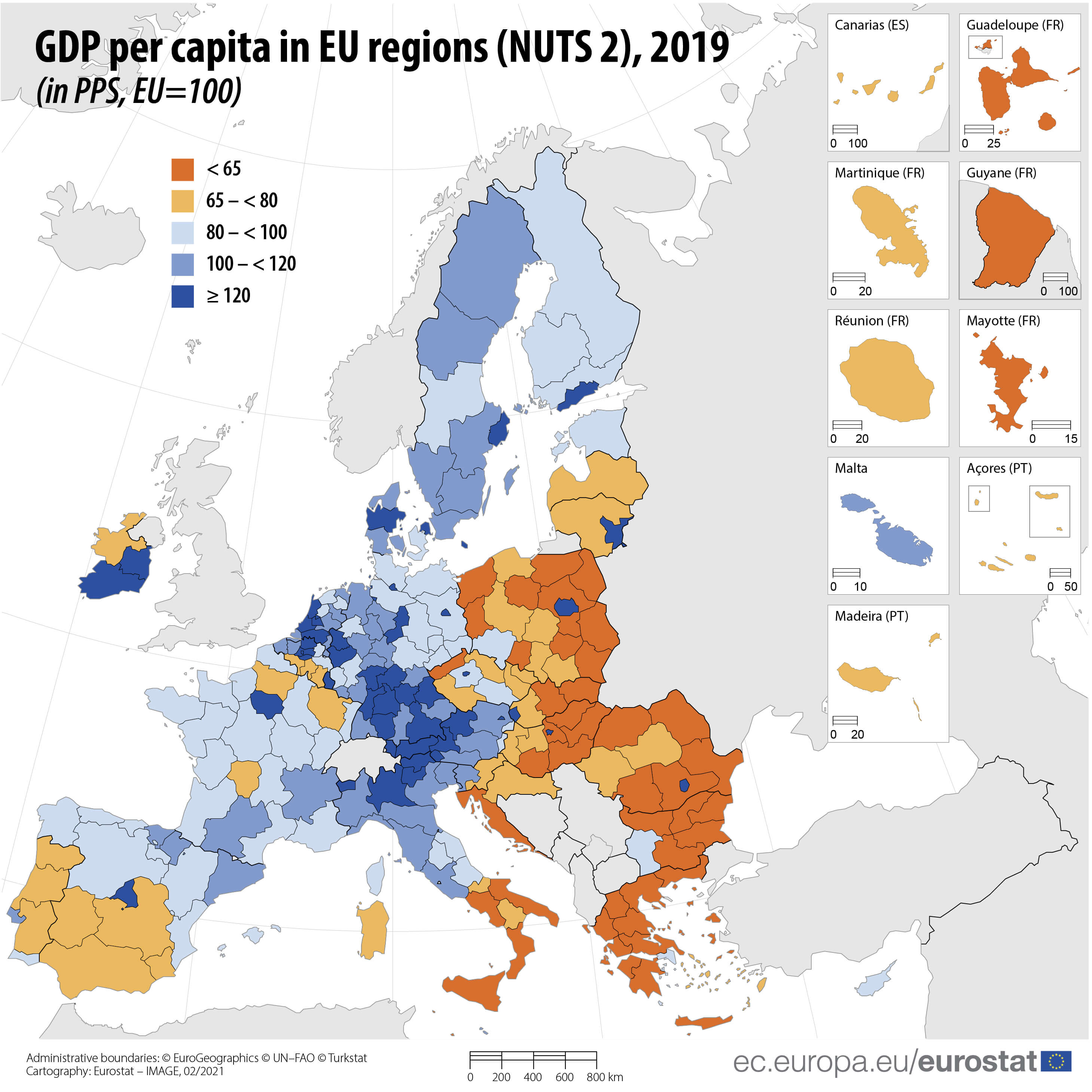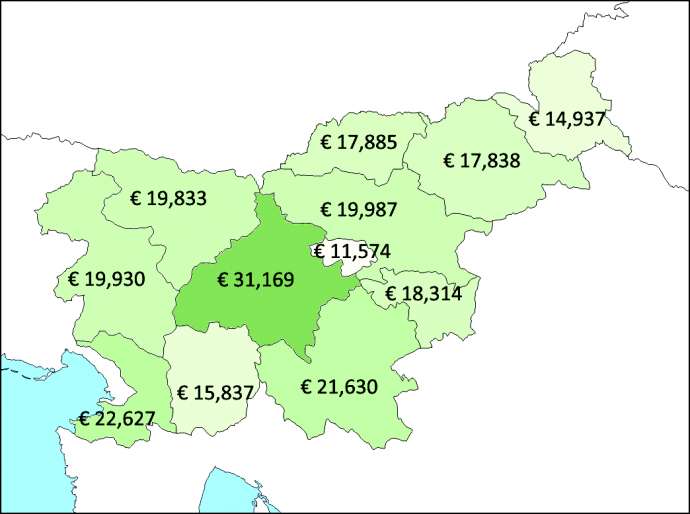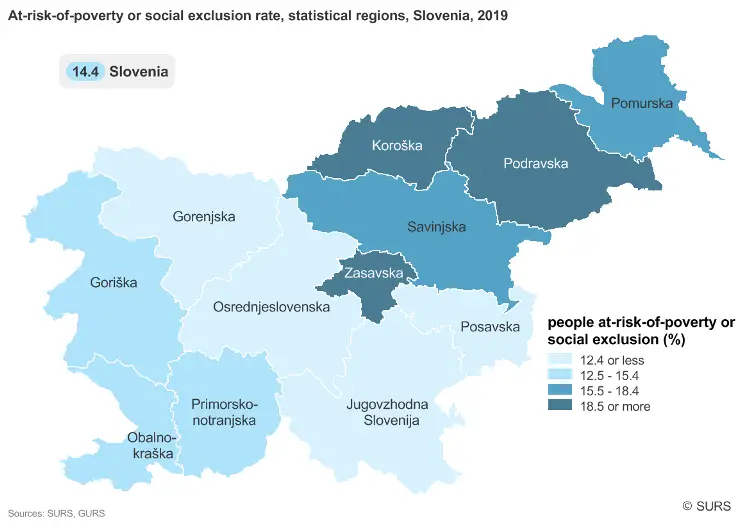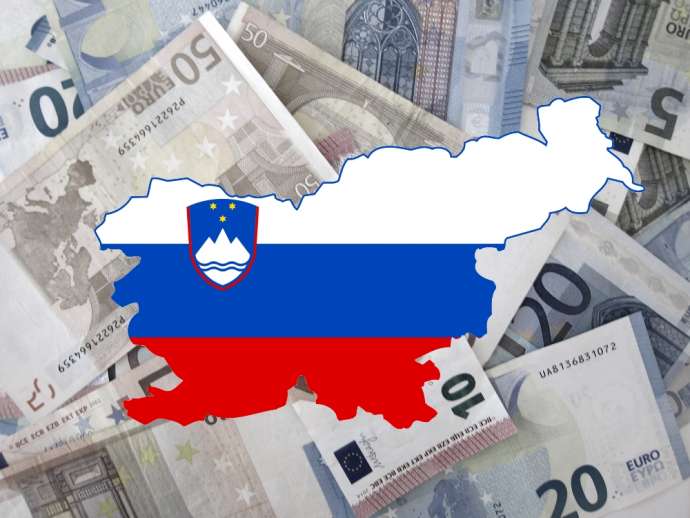If you’re thinking about living in Slovenia then money should be on your mind, as without it you’ll have trouble obtaining the goods and services needed to survive.
Whether you’ll be here to study, work, travel or retire, one way to look at the issue is to do what this article aims to, and examine the question of whether Slovenia is rich or poor from various angles and in various contexts. The first thing to note, of course, is that all this is relative, and compared to most countries in the world Slovenia is a very comfortable place to live, with functioning infrastructure, a well-fed, clothed, housed and educated population, with stores stocked full of goods. In short, a standard European country.
What’s Slovenia’s GDP per capita?
In 2019 Slovenia’s GDP was €48,393 million, as estimated by the country’s Statistical Office (Statistični urad Republike Slovenije – SURS), or in per capita terms €23,165. This is a rather broad measure though, and obscures a fact that’s long been true about Slovenia, even before independence – the west is richer than the east. In western Slovenia the GDP per capita was €27,600 in 2019, while in the east it was €19,100, using figures from Eurostat. In purchasing power standard (PPS), Slovenia was 89% of the EU's average, with western Slovenia at 106% and eastern Slovenia just 73%. As you can see in the map below, western Slovenia benefits from its proximity and integration into the area of richer regions stretching north and west, while the east remains closer to the other former communist areas.

Map: Eurostat. Click to makie it a lot bigger
What’s the richest part of Slovenia?
Digging deeper, and using data from 2018, shows an even more marked contrast among Slovenia’s 12 statistical regions. The map below tells the story, revealing that Osrednjeslovenska – the centre of the country, with Ljubljana – has 141.1% the average GDP per capita for Slovenia as a whole. The coastal area, Obalno-kraška, is the only other region to be above average, at 102.5%. The poorest region is Zasavska (capital: Trbovlje), with just 52.4% of the average GDP per capita.

Map: JL Flanner, using SURS data

Map. SURS
Is Slovenia richer than Croatia?
Slovenia gained independence and Yugoslavia fell apart three decades ago. Back in the days of the Socialist Federal Republic (1945-1992) Slovenia was the richest member, and after having established itself as an independent nation, with minimal bloodshed, there was some talk of it becoming the new Switzerland, an Alpine Tiger (or perhaps Carantanian Panther). Given that Switzerland had a GDP per capita of €76,200 in 2019, around 3.3 times more than Slovenia, this dream remains unachieved, but the small nation on the sunny side of the Alps remains the richest of the former Yugoslav states, by far, as seen in the following video.
What’s more, Slovenia isn’t just richer than other members of the former Yugoslavia, it’s consistently among the richest of the former Communist countries of central and eastern Europe. In the following animation GDP is presented in US dollars and Purchasing Power Parity terms, a measure that – like the EU’s PPS – considers the prices of goods and services in the different countries, and thus is a fairly good measure of standard of living.
It’s best to just watch the video, and see how nations rise and fall over time, but in summary: Slovenia starts at #2, slightly behind the Czech Republic (aka Czechia) in 1992. These two then stay at the top, very close together, until 1998, when Slovenia takes pole position. After this, Slovenia pulls ahead, soon maintaining a lead of some US$2,000 until 2007, when Czechia closes the gap, then takes over the top spot in 2009. Slovenian then regains #1 for 2010 and 2011, but after that Czechia is in the lead.
Here we’ll note that Slovenia – or rather Yugoslavia – was not a member of the USSR, and operated a different, more open and non-aligned form of socialism than that seen behind the Iron Curtain, as seen in the following holiday programme from 1986. You may have to click through to YouTube because there’s some topless sunbathing.
To end here’s another video that puts Slovenia among the other EU Member States, with the country having joined the organisation in 2004. And after watching this you may have some questions about Luxembourg and Ireland, with populations around a third that of Slovenia and just over 2.5 times bigger, respectively.
Next in this series we’ll take a look at incomes in Slovenia.







